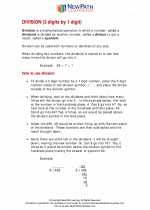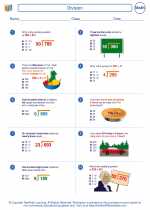Time Series Analysis Study Guide
Time series analysis is a statistical technique used to analyze and interpret patterns in data that are collected and recorded over time. It is commonly used in various fields such as economics, finance, weather forecasting, and environmental science. Understanding time series analysis is crucial for making predictions and identifying trends based on historical data.
Key Concepts in Time Series Analysis
- Time Series Data: This refers to a set of observations or measurements taken at different points in time. It can be hourly, daily, monthly, or yearly data.
- Trend Analysis: Identifying the long-term movement or direction of the data over time.
- Seasonal Variation: Patterns that repeat at regular intervals within the time series data.
- Forecasting: Using historical data to make predictions about future values in the time series.
- Smoothing Techniques: Methods used to remove noise and identify underlying trends in the data.
- Autocorrelation: The correlation of a time series with a lagged version of itself.
Steps in Time Series Analysis
When performing time series analysis, the following steps are typically followed:
- Data Collection: Gather relevant time series data from reliable sources.
- Data Visualization: Plot the time series data to identify any patterns or trends visually.
- Descriptive Statistics: Calculate summary statistics such as mean, median, and standard deviation to understand the central tendency and variability of the data.
- Time Series Decomposition: Separate the time series data into its trend, seasonal, and residual components.
- Modeling: Select an appropriate model (e.g., ARIMA, Exponential Smoothing) to capture the patterns in the time series data.
- Validation: Evaluate the performance of the model using validation techniques such as cross-validation or out-of-sample testing.
- Forecasting: Use the model to make predictions about future values in the time series.
Common Models in Time Series Analysis
There are several models that are commonly used in time series analysis, including:
- ARIMA (AutoRegressive Integrated Moving Average): A popular model for capturing different types of time series patterns.
- Exponential Smoothing: A class of models that assign exponentially decreasing weights over time to previous observations.
- Seasonal Decomposition of Time Series (STL): A method for decomposing time series data into seasonal, trend, and residual components.
- Prophet: A forecasting model developed by Facebook for time series with daily observations.
Applications of Time Series Analysis
Time series analysis is widely used in various applications, including:
- Stock Market Analysis
- Forecasting Sales and Demand
- Climate and Weather Prediction
- Economic and Financial Forecasting
- Healthcare and Epidemiological Studies
Understanding time series analysis can be beneficial for making informed decisions based on historical data and predicting future trends. It provides valuable insights into the patterns and behaviors of data over time.
.◂Math Worksheets and Study Guides Sixth Grade. Division

 Worksheet/Answer key
Worksheet/Answer key
 Worksheet/Answer key
Worksheet/Answer key
 Worksheet/Answer key
Worksheet/Answer key
